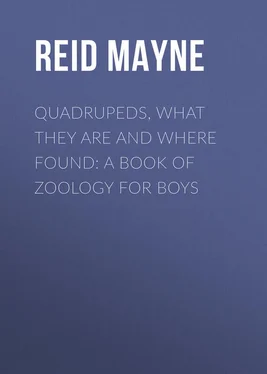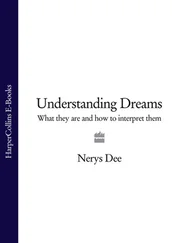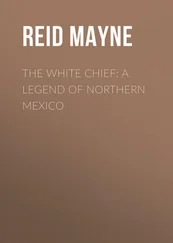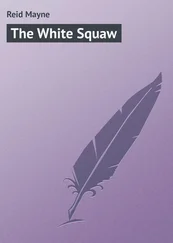Mayne Reid - Quadrupeds, What They Are and Where Found - A Book of Zoology for Boys
Здесь есть возможность читать онлайн «Mayne Reid - Quadrupeds, What They Are and Where Found - A Book of Zoology for Boys» — ознакомительный отрывок электронной книги совершенно бесплатно, а после прочтения отрывка купить полную версию. В некоторых случаях можно слушать аудио, скачать через торрент в формате fb2 и присутствует краткое содержание. Жанр: literature_19, foreign_antique, foreign_prose, на английском языке. Описание произведения, (предисловие) а так же отзывы посетителей доступны на портале библиотеки ЛибКат.
- Название:Quadrupeds, What They Are and Where Found: A Book of Zoology for Boys
- Автор:
- Жанр:
- Год:неизвестен
- ISBN:нет данных
- Рейтинг книги:5 / 5. Голосов: 1
-
Избранное:Добавить в избранное
- Отзывы:
-
Ваша оценка:
- 100
- 1
- 2
- 3
- 4
- 5
Quadrupeds, What They Are and Where Found: A Book of Zoology for Boys: краткое содержание, описание и аннотация
Предлагаем к чтению аннотацию, описание, краткое содержание или предисловие (зависит от того, что написал сам автор книги «Quadrupeds, What They Are and Where Found: A Book of Zoology for Boys»). Если вы не нашли необходимую информацию о книге — напишите в комментариях, мы постараемся отыскать её.
Quadrupeds, What They Are and Where Found: A Book of Zoology for Boys — читать онлайн ознакомительный отрывок
Ниже представлен текст книги, разбитый по страницам. Система сохранения места последней прочитанной страницы, позволяет с удобством читать онлайн бесплатно книгу «Quadrupeds, What They Are and Where Found: A Book of Zoology for Boys», без необходимости каждый раз заново искать на чём Вы остановились. Поставьте закладку, и сможете в любой момент перейти на страницу, на которой закончили чтение.
Интервал:
Закладка:
The Isabella bear is so called from its colour – being of that fulvous white known as Isabella colour. It is another of the species belonging to the great range of the Himalayas, and is found in the mountains of Nepaul. Sometimes it is observed of nearly a white colour; which led to the mistaken belief that Polar bears existed in the Himalayas.
The Syrian bear is a species found in the mountainous parts of Asia Minor. It is of a fulvous-brown colour, sometimes approaching to yellowish white. It is partly carnivorous, but feeds also on fruits; and is most remarkable as being the species first mentioned in books – that is, it is the bear of the Bible.
The Bornean bear is the last to be mentioned, though it is certainly one of the most beautiful, if not the most beautiful, of the genus. This beauty arises from its peculiar markings, especially from the large patch of rich orange colour upon the breast. It is a native of the great Island of Borneo, and little is known of its habits; but it is supposed to resemble the Malayan bear in these, as it does in many other respects.
In Africa there are no bears.
Chapter Four.
Badgers
The Badger is a silent, solitary, carnivorous creature, having his representative, in some form or other, in almost every part of the world; though nowhere either numerous in species or plentiful in individuals. In Europe he appears in two forms, the Glutton and common Badger ; in North America in three, viz., Wolverene, American , and Mexican Badgers ; and, indeed, we might say a fourth belongs to that continent, for the Racoon is as near being a badger, both in appearance and habits, as he is to being anything else. For convenience, therefore, let us class him in this group: he will certainly be more at home in it than among the bears – where most of the naturalists have placed him.
In South America we find another form of badger in the Coati mondi , of which there are several varieties; and there, too, the racoon appears of a species distinct from those of the north. Some writers class the coati with the civets, but the creature has far more of the habits and appearance of a badger than of a civet cat; and therefore, whatever the anatomists may say, we shall consider the coati a badger.
But a truer form of the badger than either of the above, exists in South America – extending over nearly the whole of that continent. This is the Grison , which, in appearance and habits, somewhat resembles the wolverene. It also is found in two or three varieties – according to the part of the country it inhabits. The Täira is another South American species of badger-like animal, though usually referred to the weasels.
In Africa, the badger appears in the Ratel , or honey badger, common from Senegal to the Cape. In Asia, in its northern zone, we have the European badger and Glutton ; and in the south, the Indian badger ; while in the Himalaya chain dwells another animal, closely allied to the badgers, called the Wha or Panda . In Java, we find still another species, the Nientek ; and in the other large Asiatic islands there are several kinds of animals that approach very near to badgers in their forms and habits, but which are usually classed either with the weasels or civets.
We shall now give some details respecting the different animals of this family; among which the Glutton, in point of size, as well as for other reasons, deserves precedence.
The Glutton is the Rosomak of the Russians, in whose country he is chiefly found – along high northern latitudes, both in Europe and Asia. He is supposed to be identical with the wolverene of North America; and if this be so, his range extends all round the Arctic zone of the globe: since the wolverene is found throughout the whole extent of the Hudson’s Bay territory. There are good reasons to believe, however, that the two species differ considerably from each other – just as the European badger does from his American cousins. It was the writer Olaus Magnus who gave such celebrity to this animal, by telling a very great “story” about the creature – which, at a time when people were little studied in natural history, was readily believed. Olaus’s report was, that whenever the glutton killed an animal, he was in the habit of feeding on the carcass till his belly became swelled out and tight as a drum; that then he would pass between two trees growing close together – to press the swelling inwards and ease himself – after which he would return to the carcass, again fill himself, and then back again to the trees, and so on, till he had eaten every morsel of the dead animal, whatever might have been its size! All this, of course, was mere fable; but it is not without some foundation in fact: for the Rosomak is, in reality, one of the greatest gluttons among carnivorous animals. So, too, is his cousin, the wolverene of America; as the fur trappers have had sad reasons to know – whenever the creature has come upon a store of their provisions. The name of Glutton, therefore, though based upon Olaus Magnus’s exaggeration, is not so inappropriate.
The glutton and wolverene are, in fact, very like the common badger in their habits; except that being much larger and stronger animals, they prey upon larger game. The reindeer, and other large quadrupeds, are often the victims of both; and it is even said that they can overcome the great elk; but this is not confirmed by the observations of any trustworthy traveller. The young of the elk, or a disabled old one, may occasionally succumb to them, but not an elk in full vigour, nor yet a reindeer, except when they can surprise the latter asleep. Their game is usually the smaller quadrupeds; and in the fur countries no animal is a greater pest to the trapper than the wolverene or glutton. A single individual will in one night visit a whole line of traps, and rob them of the captured animals – whether they be polar hares, white or blue foxes, martens, or ermine weasels.
It is this creature that is usually represented lying in wait upon the limb of a tree, and springing upon deer as they pass underneath: but this story of its habits wants confirmation.
The fur of the wolverene is one of the staple articles of trade of the Hudson’s Bay Company; though it is more prized among the Russians than with us – who esteem it in value as next to the ermine.
The Common , or European badger , need not be here described, since it is familiar to all. The same may be said of the two American badgers, and also that of India, all three of which are very similar in habits and appearance to the common kind.
But the African badger , or Ratel , merits a word or two. It is about the size of the true badger, and ordinarily lives on small game, as badgers do; but, in addition to this, it is fond of varying its diet with a little honey. This it procures from the nests of wild bees, common throughout the whole of Africa. The account given of the mode in which it finds these nests would be incredible, were it not that we have the testimony of reverend missionaries to confirm it. It is as follows: – In Africa there is a bird – a species of cuckoo – known as the Indicator bird, or honey guide. This little creature hops from tree to tree, itself apparently in search of the bees’ nests. While doing so, it utters a shrill cry; and these cries are repeated until the honey hive is found. The ratel lies in wait for this bird; and, on hearing the cry, makes towards it, and keeps following its flights till the bees’ nest is found. Should this prove to be in a tree and out of reach – for the ratel is not a climber – the animal vents his chagrin by tearing at the trunk with his teeth, as if he had hopes of felling the tree. The scratches thus made on the bark serve as a guide to certain other creatures, who are also fond of honey, viz., the Kaffir hunters and Bushmen.
Читать дальшеИнтервал:
Закладка:
Похожие книги на «Quadrupeds, What They Are and Where Found: A Book of Zoology for Boys»
Представляем Вашему вниманию похожие книги на «Quadrupeds, What They Are and Where Found: A Book of Zoology for Boys» списком для выбора. Мы отобрали схожую по названию и смыслу литературу в надежде предоставить читателям больше вариантов отыскать новые, интересные, ещё непрочитанные произведения.
Обсуждение, отзывы о книге «Quadrupeds, What They Are and Where Found: A Book of Zoology for Boys» и просто собственные мнения читателей. Оставьте ваши комментарии, напишите, что Вы думаете о произведении, его смысле или главных героях. Укажите что конкретно понравилось, а что нет, и почему Вы так считаете.












